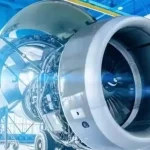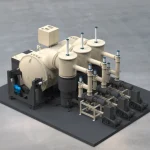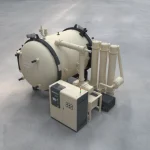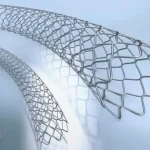Vacuum Brazing Furnace: The Ideal Solution for Stainless Steel and Beyond
Introduction: Why Vacuum Brazing Furnace Is Critical for Stainless Steel
When joining stainless steel components, oxidation is a major challenge. A vacuum brazing furnace eliminates oxygen, delivering bright, strong, and contamination-free joints. This makes it an ideal choice for manufacturers producing stainless steel heat exchangers, medical tools, or precision parts.
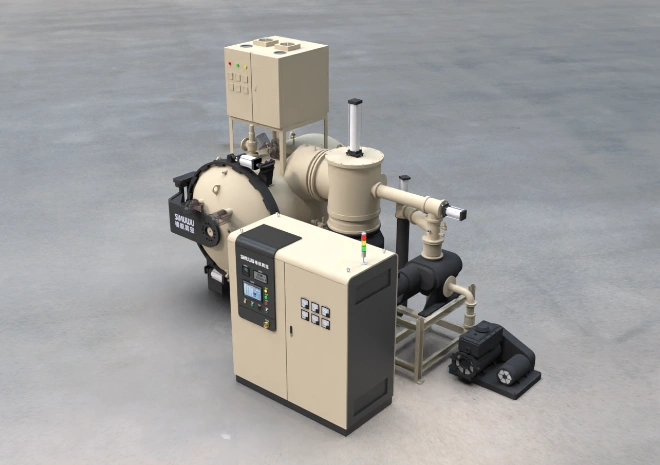
What Is a Vacuum Brazing Furnace?
A vacuum brazing furnace is a specialized piece of equipment that heats metal components in a vacuum or controlled atmosphere until the filler metal melts and bonds the parts together. Unlike open-flame or controlled-atmosphere brazing, this process achieves flux-free, perfectly clean results.
How Vacuum Brazing Works Step by Step
Loading: Stainless steel parts are placed on fixtures inside the furnace chamber.
Evacuation: The vacuum system removes oxygen and moisture to prevent oxidation.
Heating: The chamber heats to a controlled temperature (850°C–1250°C).
Brazing: Filler metal melts and flows into the joint by capillary action.
Cooling: Controlled cooling under vacuum or inert gas prevents discoloration.
Unloading: Finished parts are bright, clean, and ready for use — no cleaning required.
Key Advantages of Vacuum Brazing for Stainless Steel Parts
1. High Joint Strength and Durability
Vacuum brazing creates strong metallurgical bonds, critical for components under mechanical stress, such as stainless steel manifolds or structural parts.
2. Perfectly Clean, Oxide-Free Surfaces
The vacuum environment prevents oxidation, producing shiny, aesthetically perfect joints without additional polishing or pickling.
3. Precise Temperature Control and Minimal Distortion
Industrial vacuum brazing furnaces use advanced PID controllers to maintain even temperatures, reducing warping and ensuring dimensional accuracy.
4. Cost Savings from Reduced Post-Processing
No flux residues mean no chemical cleaning. This saves time, reduces waste treatment costs, and protects surface finish.
Comparing Vacuum Brazing Furnace vs. Conventional Brazing
| Aspect | Conventional Brazing | Vacuum Brazing Furnace |
|---|---|---|
| Atmosphere | Air or protective gas | High vacuum or inert gas |
| Joint Cleanliness | Requires post-cleaning | Bright, flux-free |
| Dimensional Control | Moderate | Excellent |
| Oxidation Risk | High | Nearly zero |
| Long-Term Cost | Higher due to cleaning | Lower over time |
Types of Industrial Vacuum Brazing Furnaces
Horizontal Vacuum Brazing Furnace: Best for medium production batches and easy loading.
Vertical Vacuum Brazing Furnace: Ensures superior temperature uniformity for critical aerospace or medical parts.
Continuous Vacuum Brazing Furnace: Designed for high-volume automated production.
Applications Beyond Stainless Steel
While stainless steel is a primary use case, vacuum brazing furnaces are also suitable for:
Titanium and nickel alloys (aerospace & medical)
Copper and brass (heat exchangers)
Carbide and tool steel (cutting inserts, molds)
Dissimilar metal joining for electronic components
Choosing the Right Vacuum Brazing Furnace Manufacturer
When selecting a supplier, consider:
Experience in stainless steel brazing solutions
Furnace size and customization options
Process control systems (data logging, remote monitoring)
After-sales service and global technical support
Advantages and Disadvantages of Vacuum Brazing Technology
Advantages of Vacuum Brazing
Clean, flux-free joints
High precision and consistency
Suitable for sensitive alloys
Reduced post-processing and labor costs
Disadvantages of Vacuum Brazing
Higher equipment investment
Longer production cycle compared to simple torch brazing
Requires trained operators
Summary: Why Vacuum Brazing Is the Best Choice
For manufacturers seeking a reliable stainless steel brazing solution, a vacuum brazing furnace offers unmatched joint quality, reduced rework, and superior process repeatability. Despite the initial investment, the long-term cost savings and improved product performance make it the preferred joining technology.
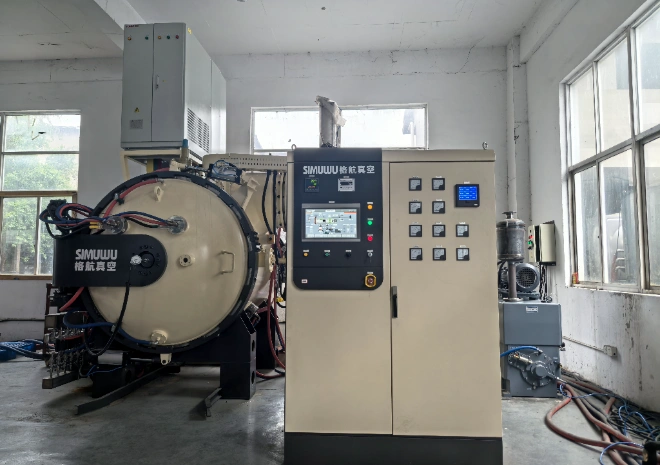
Frequently Asked Questions (FAQ)
Q: Why use a vacuum brazing furnace for stainless steel parts?
A: It prevents oxidation, creates bright joints, and eliminates post-cleaning steps.
Q: Can a vacuum brazing furnace process other metals?
A: Yes, it works for titanium, nickel alloys, copper, and dissimilar metals.
Q: How does vacuum brazing improve production efficiency?
A: By reducing rework, scrap, and chemical cleaning, saving labor and time.
Q: What industries benefit from vacuum brazing?
A: Aerospace, medical, automotive, electronics, and power generation.
Q: Is the process compatible with mass production?
A: Yes, continuous vacuum brazing furnaces can run automated, high-volume cycles.
Q: How hot does a vacuum brazing furnace operate?
A: Typically between 850°C–1250°C, depending on filler metal and base alloy.
Q: What should I look for in a vacuum brazing furnace manufacturer?
A: Proven expertise, customization options, reliable service, and process support.
